
Photographica Pages
An online guide to collectable cameras and related stuff
Seiki Kogaku Canon J-II
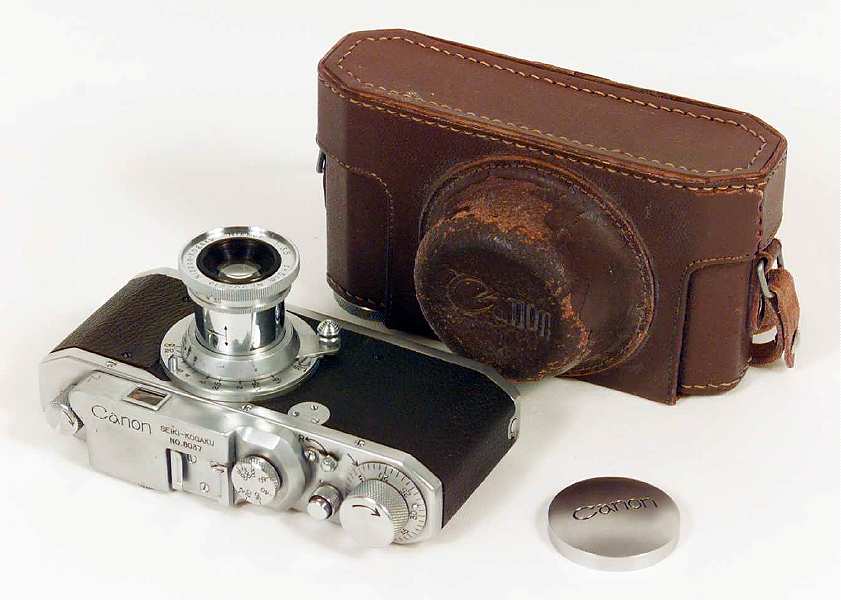
After the war, Canon began the task of regrouping and rebuilding the company.
Qualified technical personnel were scarce, many having lost there lives during
the war, others stranded wherever they were stationed at the wars end. Raw
materials were also scarce, and the immediate future looked pretty bleak. Canon
resumed camera production in the simplest manner possible. Parts from
unassembled Canon S and J cameras were used to design the most basic 35mm
camera.
The body shell and top plate were parts made for the Canon S, as was the
finder cover, which was designed for the S, but cut only for the viewfinder, and
lacked the pop up finder of the S. The top cover extends around the rewind knob,
like the top cover of a Leica, rather than being squared off like the pre-war
Canon J. The earliest examples have "Seiki Kogaku" and the serial
number engraved in front of the accessory shoe, rather than below the Canon
logo, the same place it was engraved on the S series as the pop up finder was
below the Canon logo. Most examples have "Seiki Kogaku" and the serial
number under the Canon logo, where it would remain until the end of the Leica
style bodies in the mid-1950's.
The body shell was cut and drilled for slow speeds, a feature that the J-II
lacked as the slow speed mechanism was difficult to manufacture. The hole is
capped with a metal patch with three visible screw heads. Some examples may have
been covered over by the body covering material. There is also a notch in the
top plate, on the front at about 1 o'clock to the lens mount. This was where the
rod for the rangefinder coupling went through on the Canon S. It is covered over
by the body material.
The body covering material itself is usually a cheap, blackened cardboard.
Leather, like most raw materials, was in short supply in 1945-6. This is the
weakest part of the finish of the J-II, and many (or most) of the examples found
today have had this body covering replaced. On those that don't, it is
inevitably falling apart and shoddy looking. The chrome plating is also often
not as good as that found on earlier or later cameras.
The lens mount is not Leica thread, although it is 39mm thread. The pitch of
the thread is different. A Leica thread lens can be partially screwed on, but
the threads will bind. Damage to either the lens or camera will result if you
try and force it. This mount is referred to as J mount. It was first used on the
pre-war Canon J, and can be found on some of the earliest Canon S-II cameras.
Occasionally you will find a camera that the mount was changed to accept Leica
mount lenses. Most J-II cameras were sold with the collapsible 5cm/3.5 Nikkor.
However, the very first Canon 50/3.5 Serenar lenses were sold on J-II cameras.
Peter Decheert, in his book "Canon Rangefinder Cameras1933-68"
estimates production at 525, although he states some records show a production
of 506 cameras, while others show only 164. Serial number apparently started at
8001, and may run as high as 8700. I have seen photos of 8556, so not all numbers
were used.
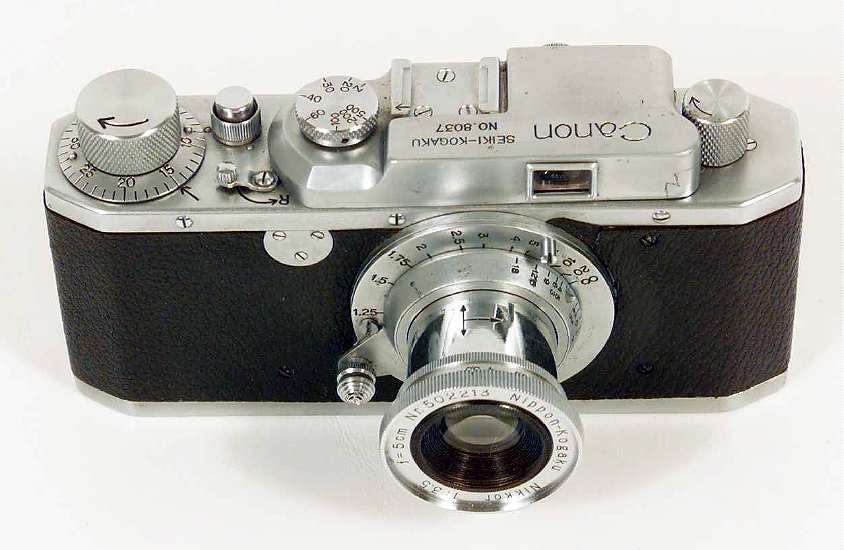
Front view of a J-II with the early style of engraving.
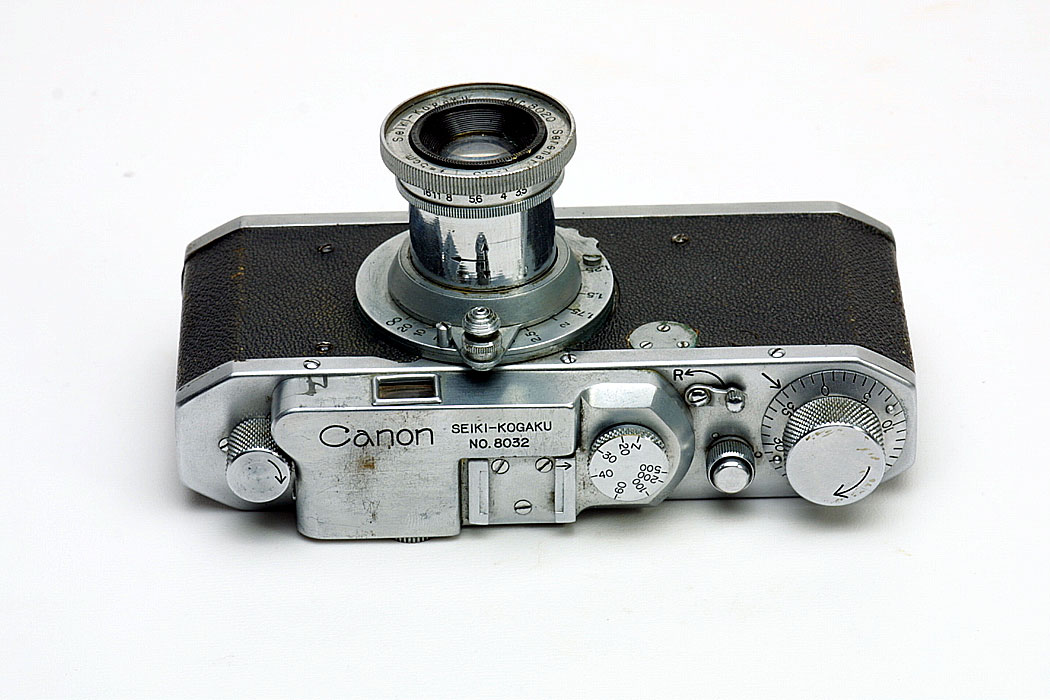
A different camera, five serial numbers earlier. Note the mark
on the front of the top cover. A similar mark can be seen on #8037, and I have
seen pictures of other early models (#8025 and #8183). It is not a scratch, but
rather a darkening of the chrome.
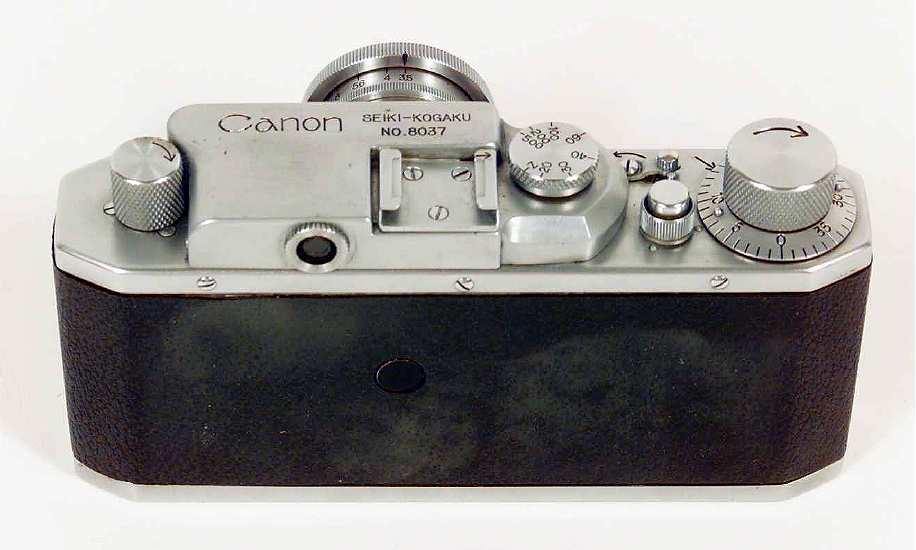
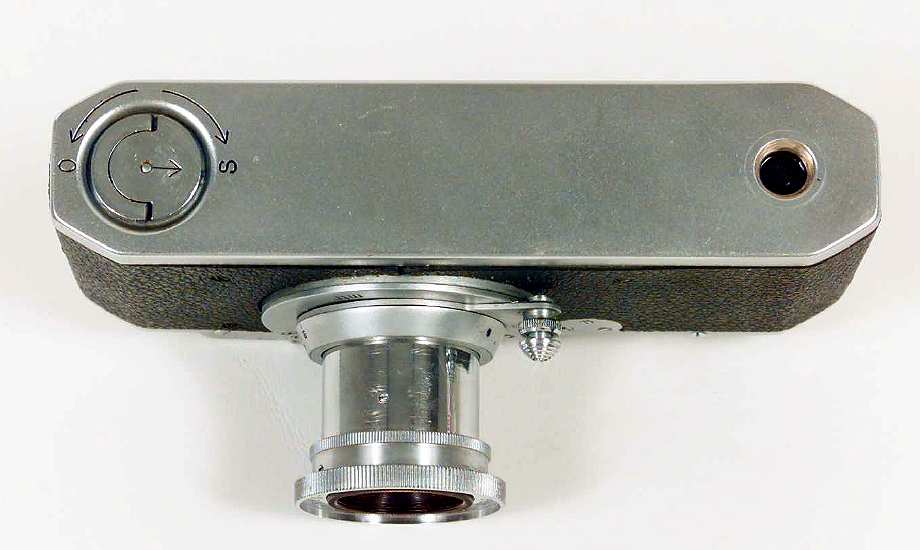
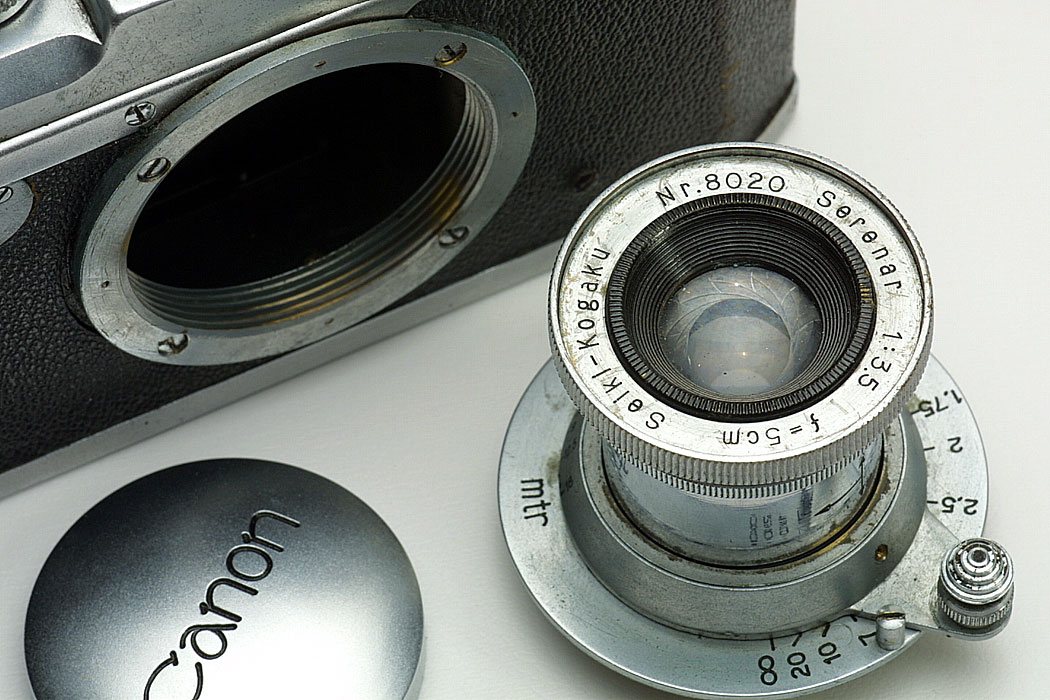
A closer look at an early Serenar lens. This is the
first lens that Canon made for consumer purchase, and this is the 10th lens in
the series. Production started at number 8011.
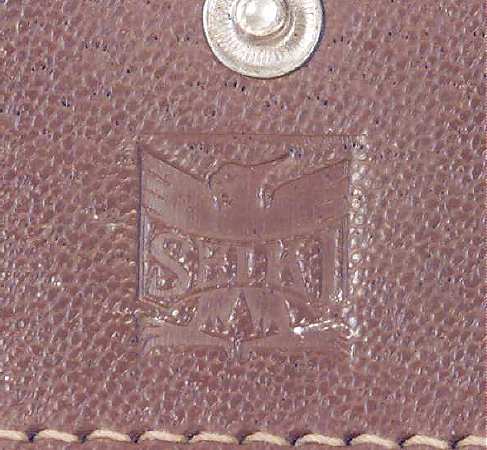
The Seiki logo embossed on the back of the case.







